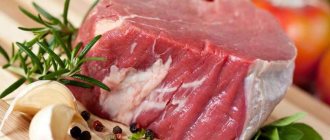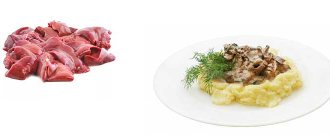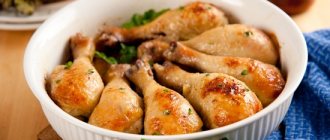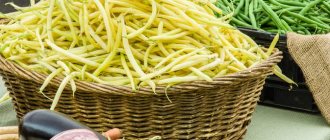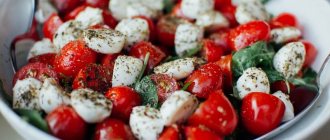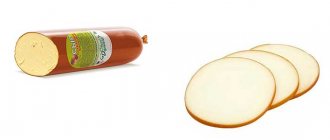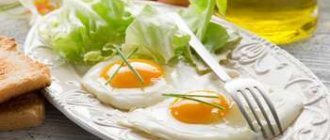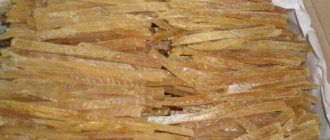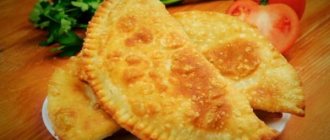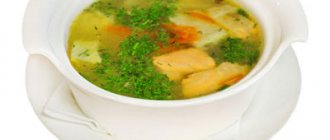Calorie content of lightly salted salmon per 100 grams
Calorie content of lightly salted salmon per 100 grams is 195.3 kcal. In a 100-gram serving of this fish:
- 23 g protein;
- 13 g fat;
- 0 g carbohydrates.
Lightly salted salmon contains a lot of fatty acids Omega 3, Omega 6, selenium, fluorine, zinc, sodium, calcium, vitamins A, E, C, PP.
Contraindications to the use of the product are exacerbations of diseases of the liver, kidneys, stomach, and intestines. Fish will have to be abandoned if water-salt metabolism is disrupted.
What are the benefits of salmon?
The most important, well-known beneficial quality of fish, especially red fish, is the protein in its meat. One hundred grams of salmon can give you half your daily protein requirement.
Its meat contains large quantities of phosphorus, iodine, calcium, potassium, sodium, magnesium, zinc, and fluorine. Of course, we cannot fail to mention the currently popular omega-3 acid, which has become a nutritional panacea for the prevention of cardiovascular diseases. A, B, D, C, PP, H is a list of vitamins contained in salmon meat, which enhance its benefits for the human body.
Nutritionists recommend eating fish in relation to meat - 2:1, this is the minimum. And if salmon is on your table at most meals, then you are in danger of strengthening your immune system, improving blood circulation, as well as the functioning of your stomach, intestines and nervous system. Even getting rid of the danger of getting thrombophlebitis promises you regular consumption of salmon.
One hundred grams of meat from this fish contains twenty grams of protein and eight grams of fat. The calorie content of salmon, depending on the individual and the method of preparation, ranges from one hundred and forty to two hundred and thirty kilocalories.
Calorie content of oven-baked salmon per 100 grams
Calorie content of oven-baked salmon per 100 grams is 101 kcal. In a 100 gram serving of fish:
- 8.88 g protein;
- 5.42 g fat;
- 4.79 g carbohydrates.
To prepare baked salmon you need:
- Place 120 g of onion cut into rings on a sheet of foil;
- add 120 g of coarsely grated carrots to the onion;
- Sprinkle 200 g of salmon fillet with lemon juice and place on onions and carrots;
- wrap the edges of the foil so that the juice of the fish and vegetables remains inside and does not flow out onto the baking sheet;
- salt the fish to taste;
- bake the salmon in the oven at 200 °C for 25 - 30 minutes.
Dietary salmon dishes
Salmon is easy to cook; the meat is very tender. We offer you several recipes for delicious and healthy salmon dishes.
Salmon baked in foil. To prepare you will need the following ingredients: 300 g of peeled salmon, 200 g of onions (2 medium onions), 20 g of lemon juice (about 1/3 lemon), 250 g of tomatoes (3 pieces), 70 g of hard cheese, a little vegetable oil , fresh dill and parsley. The calorie content of salmon baked in foil according to this recipe is about 100 kcal per 100 g.
Wash and peel the vegetables, cut the fish into steaks and dry with a towel. Rub the fish with salt and sprinkle with lemon juice. Separate the greens into leaves (branches and stems are not used), cut the onion into rings, tomatoes into circles about 0.5 cm thick, grate the cheese on a coarse grater.
While the oven is heating up, place each steak on a separate square of foil greased with vegetable oil (thin foil can be folded in half) on a layer of onions. Place tomato slices, herbs on top, sprinkle with cheese and lift the edges of the foil to make something similar to a mold. Bake the fish for half an hour in an oven preheated to 180-200 degrees, covering with a layer of foil so that the cheese does not dry out. This layer will need to be removed 5-7 minutes before it is ready.
Grilled salmon is also a very tasty dish that can be combined with rice, fresh and cooked vegetables, potatoes, and pasta. The calorie content of grilled salmon is 230 kcal per 100 g.
It is easy to prepare; when cooking, you can wrap the fish in foil, although you don’t have to do this. Wash the salmon fillet, season with salt and pepper, and lightly sprinkle with lemon. Cut the onion into rings and place in a thin layer, place the salmon on top and cook for about 20 minutes.
Diet salmon soup.
The calorie content of this dish is only 25 kcal per 100 g. It is prepared very simply, and the dish turns out tasty, aromatic and very satisfying. Take 200 g of fresh salmon, 350-400 g of potatoes, 100 g of rice, 1 small carrot, 1 medium onion, 80 g of celery. Wash and dry the ingredients, peel and chop the vegetables for soup. Boil the rice until half cooked in a pan of water. Add potatoes, grated carrots, chopped onions, celery and diced fish to the water. Leave to cook until done (you need to check the readiness by checking the potatoes). Season with salt, pepper, garnish with herbs and serve. If you liked this article, please vote for it:
(4 Votes)
Salmon (lightly salted)
rich in vitamins and minerals such as: vitamin A - 33.3%, vitamin B1 - 33.3%, vitamin B2 - 16.7%, vitamin C - 26.1%, vitamin PP - 69.4%, potassium - 30%, magnesium - 13.5%, phosphorus - 39.4%, chlorine - 11%, fluorine - 16.2%, chromium - 165.2%
- Vitamin A
is responsible for normal development, reproductive function, skin and eye health, and maintaining immunity. - Vitamin B1
is part of the most important enzymes of carbohydrate and energy metabolism, providing the body with energy and plastic substances, as well as the metabolism of branched amino acids. A lack of this vitamin leads to serious disorders of the nervous, digestive and cardiovascular systems. - Vitamin B2
is involved in redox reactions, helps to increase the color sensitivity of the visual analyzer and dark adaptation. Insufficient intake of vitamin B2 is accompanied by impaired condition of the skin, mucous membranes, and impaired light and twilight vision. - Vitamin C
is involved in redox reactions, the functioning of the immune system, and promotes the absorption of iron. Deficiency leads to loose and bleeding gums, nosebleeds due to increased permeability and fragility of blood capillaries. - Vitamin PP
is involved in redox reactions of energy metabolism. Insufficient vitamin intake is accompanied by disruption of the normal condition of the skin, gastrointestinal tract and nervous system. - Potassium
is the main intracellular ion that takes part in the regulation of water, acid and electrolyte balance, and is involved in the processes of conducting nerve impulses and regulating blood pressure. - Magnesium
is involved in energy metabolism, the synthesis of proteins, nucleic acids, has a stabilizing effect on membranes, and is necessary to maintain the homeostasis of calcium, potassium and sodium. A lack of magnesium leads to hypomagnesemia, an increased risk of developing hypertension and heart disease. - Phosphorus
takes part in many physiological processes, including energy metabolism, regulates acid-base balance, is part of phospholipids, nucleotides and nucleic acids, and is necessary for the mineralization of bones and teeth. Deficiency leads to anorexia, anemia, and rickets. - Chlorine
is necessary for the formation and secretion of hydrochloric acid in the body. - Fluoride
initiates bone mineralization. Insufficient consumption leads to caries, premature wear of tooth enamel. - Chromium
is involved in the regulation of blood glucose levels, enhancing the effect of insulin. Deficiency leads to decreased glucose tolerance.
more hide
You can see the complete directory of the most useful products in the application
Red fish, which includes salmon, in Rus' was considered a sign of a good position in society - it could only be served in wealthy, eminent houses. However, many people will be genuinely surprised by the fact that in medieval Europe, red fish was by no means a delicacy - it was fed to sailors and farm laborers who were hired for the most difficult jobs.
In those days when no one had any idea about the calorie content of salmon, people intuitively used it to maintain strength during hard hard labor. It should also be said that the widespread consumption of red fish in European countries was associated with its availability - there was no industrial fishing yet and there was enough fish to meet the needs of coastal residents.
With the development of technology, everything has changed - fishing opportunities have increased tenfold, which has led to a sharp decline in the population. Now that modern science knows a lot about the benefits of red fish, it has become a delicacy for everyone.
Calorie content of smoked salmon per 100 grams
Calorie content of smoked salmon per 100 grams is 203 kcal. In 100 g of fish:
- 22.6 g protein;
- 12.4 g fat;
- 0 g carbohydrates.
Despite the fact that smoked salmon contains a lot of fatty acids, chlorine, nickel, fluorine, molybdenum, potassium, calcium, magnesium, iron, chromium, vitamins A, PP, this product is not recommended to be eaten in large quantities and often. Otherwise, malfunctions in the gastrointestinal tract, exacerbation of diseases of the liver, kidneys, pancreas, and the appearance of swelling cannot be ruled out.
Calorie content Boiled salmon. Chemical composition and nutritional value.
Nutritional value and chemical composition of “Boiled Salmon”.
The table shows the nutritional content (calories, proteins, fats, carbohydrates, vitamins and minerals) per 100 grams of edible portion.
| Nutrient | Quantity | Norm** | % of the norm in 100 g | % of the norm in 100 kcal | 100% normal |
| Calorie content | 189 kcal | 1684 kcal | 11.2% | 5.9% | 891 g |
| Squirrels | 22.5 g | 76 g | 29.6% | 15.7% | 338 g |
| Fats | 12.5 g | 56 g | 22.3% | 11.8% | 448 g |
| Water | 59.62 g | 2273 g | 2.6% | 1.4% | 3812 g |
| Ash | 3.26 g | ~ | |||
| Vitamins | |||||
| Vitamin A, RE | 13 mcg | 900 mcg | 1.4% | 0.7% | 6923 g |
| Retinol | 0.013 mg | ~ | |||
| Vitamin B1, thiamine | 0.275 mg | 1.5 mg | 18.3% | 9.7% | 545 g |
| Vitamin B2, riboflavin | 0.487 mg | 1.8 mg | 27.1% | 14.3% | 370 g |
| Vitamin B4, choline | 59.57 mg | 500 mg | 11.9% | 6.3% | 839 g |
| Vitamin B5, pantothenic | 1.92 mg | 5 mg | 38.4% | 20.3% | 260 g |
| Vitamin B6, pyridoxine | 0.944 mg | 2 mg | 47.2% | 25% | 212 g |
| Vitamin B9, folates | 29 mcg | 400 mcg | 7.3% | 3.9% | 1379 g |
| Vitamin B12, cobalamin | 3.05 mcg | 3 mcg | 101.7% | 53.8% | 98 g |
| Vitamin C, ascorbic acid | 3.7 mg | 90 mg | 4.1% | 2.2% | 2432 g |
| Vitamin D, calciferol | 8.6 mcg | 10 mcg | 86% | 45.5% | 116 g |
| Vitamin E, alpha tocopherol, TE | 1.14 mg | 15 mg | 7.6% | 4% | 1316 g |
| Vitamin K, phylloquinone | 0.1 mcg | 120 mcg | 0.1% | 0.1% | 120000 g |
| Vitamin RR, NE | 10.077 mg | 20 mg | 50.4% | 26.7% | 198 g |
| Macronutrients | |||||
| Potassium, K | 628 mg | 2500 mg | 25.1% | 13.3% | 398 g |
| Calcium, Ca | 15 mg | 1000 mg | 1.5% | 0.8% | 6667 g |
| Magnesium, Mg | 37 mg | 400 mg | 9.3% | 4.9% | 1081 g |
| Sodium, Na | 56 mg | 1300 mg | 4.3% | 2.3% | 2321 g |
| Sera, S | 254.4 mg | 1000 mg | 25.4% | 13.4% | 393 g |
| Phosphorus, P | 256 mg | 800 mg | 32% | 16.9% | 313 g |
| Microelements | |||||
| Iron, Fe | 1.03 mg | 18 mg | 5.7% | 3% | 1748 g |
| Manganese, Mn | 0.021 mg | 2 mg | 1.1% | 0.6% | 9524 g |
| Copper, Cu | 321 mcg | 1000 mcg | 32.1% | 17% | 312 g |
| Selenium, Se | 46.8 mcg | 55 mcg | 85.1% | 45% | 118 g |
| Zinc, Zn | 0.82 mg | 12 mg | 6.8% | 3.6% | 1463 g |
| Essential amino acids | |||||
| Arginine* | 1.522 g | ~ | |||
| Valin | 1.31 g | ~ | |||
| Histidine* | 0.749 g | ~ | |||
| Isoleucine | 1.172 g | ~ | |||
| Leucine | 2.067 g | ~ | |||
| Lysine | 2.336 g | ~ | |||
| Methionine | 0.753 g | ~ | |||
| Threonine | 1.115 g | ~ | |||
| Tryptophan | 0.285 g | ~ | |||
| Phenylalanine | 0.993 g | ~ | |||
| Nonessential amino acids | |||||
| Alanin | 1.538 g | ~ | |||
| Aspartic acid | 2.605 g | ~ | |||
| Glycine | 1.221 g | ~ | |||
| Glutamic acid | 3.797 g | ~ | |||
| Proline | 0.899 g | ~ | |||
| Serin | 1.038 g | ~ | |||
| Tyrosine | 0.859 g | ~ | |||
| Cysteine | 0.273 g | ~ | |||
| Sterols (sterols) | |||||
| Cholesterol | 71 mg | max 300 mg | |||
| Saturated fatty acids | |||||
| Saturated fatty acids | 1.257 g | max 18.7 g | |||
| 14:0 Miristinovaya | 0.176 g | ~ | |||
| 16:0 Palmitinaya | 0.81 g | ~ | |||
| 18:0 Stearic | 0.272 g | ~ | |||
| Monounsaturated fatty acids | 2.697 g | min 16.8 g | 16.1% | 8.5% | |
| 16:1 Palmitoleic | 0.322 g | ~ | |||
| 18:1 Oleic (omega-9) | 1.732 g | ~ | |||
| 20:1 Gadoleic (omega-9) | 0.286 g | ~ | |||
| 22:1 Erucic (omega-9) | 0.358 g | ~ | |||
| Polyunsaturated fatty acids | 3.256 g | from 11.2 to 20.6 g | 29.1% | 15.4% | |
| 18:2 Linolevaya | 0.22 g | ~ | |||
| 18:3 Linolenic | 0.378 g | ~ | |||
| 18:4 Steoride Omega-3 | 0.106 g | ~ | |||
| 20:4 Arachidonic | 0.342 g | ~ | |||
| 20:5 Eicosapentaenoic acid (EPA), Omega-3 | 0.411 g | ~ | |||
| Omega-3 fatty acids | 2.692 g | from 0.9 to 3.7 g | 100% | 52.9% | |
| 22:5 Docosapentaenoic acid (DPA), Omega-3 | 0.368 g | ~ | |||
| 22:6 Docosahexaenoic acid (DHA), Omega-3 | 1.429 g | ~ | |||
| Omega-6 fatty acids | 0.562 g | from 4.7 to 16.8 g | 12% | 6.3% |
The energy value of boiled salmon is 189 kcal.
Primary Source: Created in the application by the user. Read more.
** This table shows the average levels of vitamins and minerals for an adult. If you want to know the norms taking into account your gender, age and other factors, then use the “My Healthy Diet” application.
Benefits of salmon
With regular consumption of boiled and steamed salmon, the following beneficial properties of fish appear:
- salmon is enriched with Omega 3 and Omega 6 fatty acids, which saturate the body with energy, have an anti-stress effect, and reduce the level of bad cholesterol;
- Numerous studies have proven that the beneficial substances of salmon are necessary for the restoration of cell membranes of brain cells and retina;
- salmon normalizes the functioning of the heart and blood vessels, strengthens the immune system;
- when boiled fish is included in the diet, the required level of leptin is maintained, which restores metabolism, accelerating fat burning processes;
- the beneficial properties of salmon have been proven to prevent senile dementia, improve the condition of hair and skin;
- Fish melatonin is necessary for normalizing sleep;
- Salmon vitamins and minerals are important for restoring central nervous system functions.
Benefits and contraindications
The set of vitamins and microelements listed above allows salmon to have a comprehensive healing effect on the human body. It increases immunity, improves blood composition, strengthens the heart and blood vessels, bones, tooth enamel, improves skin condition, normalizes digestion, and regulates the functioning of internal organs. Salmon is very useful for the functioning of the brain and nervous system - it not only increases performance and reduces fatigue, but also improves mood and sleep and helps to resist stress. Zinc contained in salmon enhances the body's protective and regenerative powers.
Due to its calorie content, salmon is an excellent source of energy and a good prophylactic against anemia, atherosclerosis, ischemia, hypertension, and senile dementia. It is useful for children and pregnant women to use, as it helps the fetus and child develop normally. Also, the meat of this fish prevents the formation of cancer cells.
Salmon is very well absorbed by the body, so it can become a useful substitute for “difficult” protein products to digest, such as animal and poultry meat. Since it contains no carbohydrates, the body rearranges metabolic processes when consuming salmon to obtain energy from fats, that is, it starts the process of fat burning, therefore, despite the rather high calorie content of salmon, it is very useful for weight loss, of course, with moderate consumption.
Despite the fact that this fish has virtually no contraindications, it is not recommended for obesity due to the high fat content and calorie content of salmon
. It can also cause individual allergic reactions. Salmon should be consumed with caution in case of chronic liver diseases, gastrointestinal ulcers, urolithiasis and cholelithiasis, thyroid dysfunction, as well as active pulmonary tuberculosis.
Harm to salmon
Contraindications to eating salmon are:
- developed food allergies to fish;
- the period of breastfeeding, since in this case malfunctions in the baby’s gastrointestinal tract are possible and skin rashes may appear;
- liver and kidney diseases (this point is relevant for salted and lightly salted fish).
Research by American doctors has shown that mercury accumulates in salmon meat, which can cause severe food intoxication. When eating fried fish, you gain excess weight and the risk of exacerbation of cholecystitis and pancreatitis increases.
SUBSCRIBE TO SITE UPDATES
Dietary properties of salmon:
Who doesn't love fish? On any holiday, and not only, fish dishes are a table decoration. And the most “beautiful” decoration is, of course, red fish, or salmon. It is classified among the so-called fatty varieties. Therefore, many, especially women, have a question: what calorie content does salmon have, and will dishes made from it cause extra pounds? I can say right away: they won’t. Moreover, boiled or steamed salmon dishes. Well, how is it useful?
Like many types of fish, it is rich in so-called fatty acids. But this fish contains the most of them.
She is not offended by minerals and proteins that are beneficial to human health. There are vitamins and unsaturated fats in sufficient quantities.
Application
Grilled salmon is not only tasty, but also quite healthy. Grilled salmon does not lose its basic beneficial properties during the cooking process. In stores you can buy salmon carcass, both frozen and fresh. To grill salmon, you need to marinate it properly. To do this, we make a marinade of spices to taste, pour it on top of the meat and into the cuts between the skin and the meat. Pour in the juice of a whole lemon. Fold in half with the meat inside and leave to marinate for three hours. Next, grill until golden brown. With this preparation, the fish will be as healthy as possible and very tasty.
Market Analytics
- Global cosmetics market 2021: an unprecedented test for the global cosmetics industry
- Top 10 Cosmetic Research and Development of 2021
- 2020 in the beauty industry – innovation without borders
Convenient search for beauty salons on our website
Beauty salons in Moscow Beauty salons in St. Petersburg Beauty salons in Ekaterinburg Beauty salons in Novosibirsk
Latest blog posts on our website
- Naturecream / Properties of the “Sunny” oil itself
- Naturecream / “Sugar” wrinkles - or what glycation can do
- Naturecream / Esterified oils
- Naturecream / Arnica - the magical plant of alchemists
- Naturecream / Tremella Extract - Snow Mushroom Detox for Skin
- Prostye-sovety / How to visually enlarge your lips with makeup
- Naturecream / Apricot kernel oil for face
- Naturecream / MATRIXYL3000 - the best skin elasticity stimulator
- Naturecream / SPF in Natural Oils
- Naturecream / Geranium (Pelargonium) oil for skin health and beauty
Latest forum topics on our website
- Natalya / How to properly make a gelatin mask?
- Mrs._Smith / Badly sunburned! What to do?((
- Ice / Is it necessary to combine fitness classes with a diet?
- Antonova / What can be used for hair loss?
- Radio operatorKat / Who was on a protein diet?
Other articles in this section
| Minced fish Even the most avid opponents of fish dishes happily eat soft and juicy cutlets, without noticing that they are fish. A skilled culinary specialist is able to prepare real “meat” mince from simple varieties of fish, which even a sophisticated gourmet cannot distinguish. Both at home and in catering establishments, this type of product enjoys well-deserved respect. Light and nutritious cutlets, tender and juicy meatballs, all kinds of fillings for savory pies - this is not a complete list of uses for minced fish. |
| Smoked capelin Capelin is a fish that lives in the open sea, in the upper layers of water. Capelin belongs to the smelt family. The fish is small in size. It is popular in all countries of the world. Capelin is found in the Atlantic, Pacific and Arctic oceans. The body of capelin has a length of up to 22 centimeters, the weight of the fish is less than 70 grams. |
| Saira Saira is a medium-sized sea fish with a thin, elongated body. The scales have a silvery color with a bluish tint. When cutting fish, the scales are easily removed. The saury feeds on crustacean plankton, which results in a high content of vitamins and microelements in the fish. |
| Dried roach Roach is a subspecies of roach and belongs to the carp family. It is found only in the Caspian Sea basin, most often found in the lower reaches of the Volga and Ural. But among the people, ram, which is another subspecies of roach, is also called roach, although this is not entirely correct. By analogy, Siberians also call local roach roach. |
| Boiled trepang Trepang, or sea ginseng, is a marine invertebrate animal belonging to the echinoderm species. They live naturally in Southeast Asia. In appearance it resembles a large worm with many papillae (small soft outgrowths) growing on its back. Sea cucumbers have a mouth opening surrounded by 20 tentacles that help capture food. An adult specimen grows up to 40 cm in length. The weight of sea cucumber can reach 1.5 m. |
| Pelamida Pelamida (sard) belongs to the schooling species of predatory fish of the Mackerel family and includes the following subspecies: Atlantic, eastern, Chilean and Australian. Pelamida is a heat-loving fish species, so its distribution area is the shores of Africa, Australia, and South America. Numerous populations of bonito are found in the Mediterranean and Black Sea, while bonito comes to the Black Sea in the spring for spawning, and with the approach of autumn, it returns through the Bosphorus Strait to warm waters. It is worth noting that the number of bonito in the waters of the Black Sea is not constant. |
| Fresh burbot Burbot - this fish belongs to the cod family. Lives in fresh water bodies. The size of this fish reaches one and a half meters in length, and its weight is approximately 30 kg. Moreover, the liver of burbot can account for at least 10% of the total mass of the fish. |
| Chum salmon caviar granular Chum salmon is a family of salmon fish. She spawns once in her life, after which she dies, while her average life expectancy is 7 years. Basically, chum salmon lives in sea waters. It has an even silver color, but if it is in the river, the color changes and becomes darker. The fish also has sharp, large teeth. |
| Canned cod caviar Many food products in the modern world are canned, and cod caviar is not an exception, but rather a pattern. After all, caviar is a perishable product and cannot be stored for a long time without proper “care.” At the same time, all useful vitamins and microelements are retained in the canned product if preparation standards are met and approved ingredients are used. |
| Stuffed pike perch Stuffed pike perch is a dish that has graced Russian cuisine for centuries. Pike perch is well suited for stuffing due to the low content of small bones in the fish. The dish is served at the festive table, and also serves as a good variety for a family dinner. The technology for preparing the dish is not complicated, so mastering it is not difficult. |
How many calories are in salmon?
Well, now directly how many calories are in it. After all, this is probably the main question that interests you. So:
The calorie content of fresh salmon is:
140 kcal per 100 grams of product
Proteins, fats and carbohydrates (BJU) of fresh salmon per 100 grams:
As you can see, this is not much at all for such a fatty fish. Most likely, your figure will not suffer from its use. Although, of course, the measure must be observed. However, as with other products.
How many calories are there in this fish, cooked in different ways? And here it is:
Salmon calorie table, per 100 grams of product:
| Product | Calories, in kcal |
| calorie content of baked salmon | 185,7 |
| calorie content of boiled salmon | 189, 0 |
| calorie content of lightly salted salmon | 195,0 |
| calorie content of grilled salmon | 230,0 |
| calorie content of steamed salmon | 197,0 |
| calorie content of salted salmon | 205,0 |
| calorie content of fried salmon | 194,4 |
| calorie content of smoked salmon | 202,5 |
And the nutritional value of this fish, prepared in different ways, is this:
Salmon nutritional value table (BZHU), per 100 grams of product:
| Salmon | Squirrels, gr. | Fats, gr. | Carbohydrates, gr. |
| baked | 19,7 | 12,4 | 0,0 |
| boiled | 22,5 | 12,6 | 0,0 |
| lightly salted | 23,0 | 13,0 | 0,0 |
| Grilled | 21,8 | 14,1 | 0,0 |
| for a couple | 19,3 | 14,0 | 0,0 |
| salty | 22,06 | 14,17 | 0,0 |
| fried | 19,86 | 12,25 | 0,0 |
| smoked | 22,5 | 12,5 | 0,0 |
Calorie content of salmon for various cooking methods
There are many delicious salmon dishes. Their preparation may take very little time, but the end result will be magnificent - red fish has a delicate, unique taste. Depending on the components included in the recipe, as well as on the type of heat treatment, the calorie content of salmon may vary.
We offer you a list of the most popular salmon dishes, taking into account calorie content (per 100 g of finished product):
- boiled - 170-189 kcal;
- fried in portions – 191-197 kcal;
- fried in batter – 265.9 kcal;
- baked whole carcass in foil – 156-180 kcal;
- grilled – 190-210 kcal;
- with cheese sauce – 230 kcal;
- baked on coals – 187 kcal;
- fried on the grill – 140-160 kcal;
- ear – 66-77 kcal.
As you can see, the lowest calorie dishes are fish soup and fish fried on the grill. The calorie content of the salmon in the first course was reduced due to the liquid and a small amount of the fish itself (approximately 50-60 g per serving), but in the second course - due to the absence of additional fats and sauces.
Popular articles Read more articles
02.12.2013
We all walk a lot during the day. Even if we have a sedentary lifestyle, we still walk - after all, we...
604760 65 More details
10.10.2013
Fifty years for the fair sex is a kind of milestone, crossing which every second...
444184 117 More details
Salmon, or Atlantic salmon, is a valuable and rare fish of the salmon family, living in the waters of the Arctic and Atlantic oceans, in the basins of the Barents, Baltic and White seas, in Lakes Ladoga and Onega. Representatives of this species have an elongated body covered with small shiny scales, an elongated and slightly pointed head, and a large mouth with many sharp, strong teeth. The sides of Atlantic salmon are silvery, the back is gray with a bluish tint, and the fins are brown. Above the lateral line on the body of the fish you can find many dark spots.
The maximum lifespan of salmon in nurseries and wild reservoirs is 13 years. During this time, Atlantic salmon manages to gain weight up to 39 kg and grow in length up to 145 cm. Salmon is sold fresh, frozen, salted and smoked. The carcasses and fillets of this fish are baked, boiled, fried, and used for making soups, pastries, salads, cold appetizers or main courses.
How is fish good for weight loss?
There are two types of fish that help get rid of fat deposits. These are salmon and tuna. They are rich in protein and contain two fatty acids, which promote the breakdown of subcutaneous fat and “stimulate” metabolism. An excellent option for lunch or dinner is a piece of fish, plus a vegetable side dish. Steamed vegetables are best for this.
Salmon is considered a fatty fish, but due to its low calorie content, it does not harm the figure at all. On the contrary, it stimulates metabolism (due to the amino acids it contains). In addition, due to its high protein content, it satisfies the feeling of hunger for a long time, which makes it possible to avoid snacking on cookies or candy while losing weight.
Of course, you should not abuse it. This fish is rich in protein, so you need to be careful in consuming it daily. Nutritionists advise not to get too carried away and consume no more than 250 grams of it per day.
Calorie content of salmon and its benefits
In terms of calories, salmon is a low-calorie product. Its calorie content in raw form is about 219 kcal per 100 g of product. Moreover, it contains 20.8 g of protein, 15.1 g of fat and does not contain carbohydrates. Salmon often comes to our table in smoked or lightly salted form. The calorie content of lightly salted salmon is about 200 kcal per 100 g of product. The calorie content of smoked salmon is 169 kcal per 100 g of product.
The number of calories in salmon will decrease if this fish is steamed. The calorie content of steamed salmon will be about 153 kcal per 100 g of product. And if you prepare fish soup, the number of calories will decrease to 67 kcal per 100 g of product.
When frying, the calorie content of salmon increases significantly.
Considering how many calories there are in salmon, this red fish is the leader in fat content and content of useful components. It contains a lot of vitamins, fatty acids, unsaturated fats, and minerals. Salmon contains much more vitamins than other salmon fish.
When eating salmon, your mood improves and emotional stress disappears. Including salmon in the diet helps increase the elasticity of brain vessels and improve blood circulation. Salmon is a source of complete, easily digestible protein. Amino acids enter the human body from fish literally an hour after the start of digestion. Therefore, this product is necessary for restoring muscle tissue, skin, and also for strengthening hair follicles. It is especially useful to consume salmon for athletes and athletes, as well as during the recovery period after surgery. Considering that fish is usually consumed in small quantities, the calorie content of salmon does not affect the figure in any way.
Nutritionists and doctors recommend eating salmon to prevent senile dementia and diseases of the nervous system.
Recipe? Recipe!
What can be cooked from this fish? Yes, a lot of things. Here, for example, is a recipe for a simple salad:
Salmon salad:
Half a kilogram of salmon. The fish must be cooked and must be cooled to room temperature. Further:
- celery, two stalks
- half a red onion
- juice of one lemon
- olive oil, one tablespoon
- dill
- salt
- ground pepper
First of all, you need to finely chop the celery, red onion and dill. Place the fish on a separate plate. In another bowl, mix chopped celery, onion and dill. Add lemon juice and olive oil here. After mixing, carefully pour it all into a plate with fish. Add salt and pepper as needed and for taste. Place the finished salad in the refrigerator for half an hour to cool. And that's it, the salad is ready.
